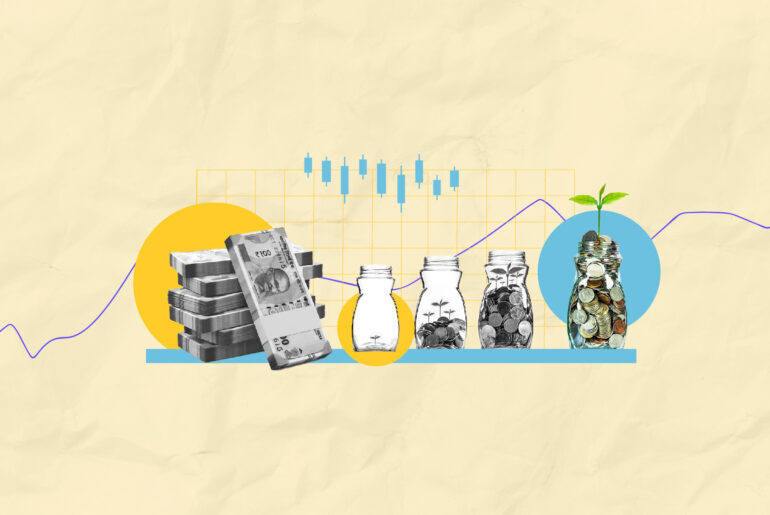Last Updated on May 24, 2022 by Aradhana Gotur
Face value of a share is the original cost of the stocks as listed by the company on the share certificate. Face value is often confused with the market price of a stock and it leaves many baffled. For example, if you check the face value of Reliance Industries Ltd, it is currently Rs 10 while the market price is presently above Rs 2,000. How does this work?
Let us dive deep into what is the face value of share and explore the face value of share meaning and market practicalities.
Table of Contents
What is face value of a share?
Face value refers to the nominal value of a stock as decided by the company before coming up with the Initial Public Offer (IPO). It is the value of each share mentioned in the share certificate. Note that share certificates today are issued digitally; the days of physical share certificates are long gone.
The face value could be anything from Re 1, Rs 2, Rs 5, Rs 10, or as the company may deem appropriate. However, the Securities Exchange Board of India (SEBI) has defined Re 1 as the minimum threshold when fixing the face value of shares.
Face value is arrived at using two essential components of a company’s market journey, i.e., share capital and the outstanding number of shares.
Formula:
Face value of a share = Equity share capital / Outstanding number of shares
Here is a snapshot from the official website of NSE. Here you can find that SBI currently trades at a market value of Rs.428.5 but has a face value per share of Re 1.
Face value of a share at a glance
- A company is obliged to retain the capital equivalent to the face value of shares and not pay it out as dividends.
- Face value is instrumental while reaching the accounting value of a stock used in the company’s financial statements.
- Face value serves as a basis for calculating interest payments, the market value of shares, premiums, and dividends.
Face value vs market value
| Face Value | Market Value |
| The company decides face value at the time of issue of shares. | It is the valuation of shares of the company’s share capital in the balance sheet. The market price is the current price of the stock at which it is trading in the stock market. It is that price at which you can buy or sell the share. |
| The company determines face value. | Market value is determined by the product of the outstanding shares of the company and the market capitalization. |
| The face value of a stock is static and doesn’t change frequently. For example, a stock split is the only case where the Face value is changed. | On the other hand, market value is highly liquid and subject to constant changes. |
Can the market value of a share be less than the face value?
This is not something we come across every day, but it is possible that the face value of a share is more than the market value of the share. Generally, we witness market values of shares being much higher than the face value.
Let look at an example:
Suppose ABC limited came up with an IPO and fixed the face value of their shares at Rs 100. However, the shares were listed in the stock exchange at Rs 80, which means at a discount.
Here, we can observe that face value is at Rs 100 while the share trades at 80, making for a case when the market value is less than the face value.
Importance of face value
Face value is not just a mathematical value for a company. Below are a few objectives that require an understanding of the concept of face value to successfully undertake them.
Distribution of Dividend
A company calculates the dividend to be distributed among the shareholders on the face value of shares.
Thus, a dividend yield of 5% would mean that the company is paying 5% of the face value of shares as dividends regardless of the market value of the shares.
Take, for example, that a bank share XYZ has a face value of Rs 10 and is currently trading at Rs 200. If the company has announced a dividend of 10%, then every shareholder per share is entitled to Re 1. It also clearly means the company is distributing dividends on a face value of Rs 10 and not on Rs 200.
Stock split
When a company believes that its stock is expensive to the buyers or lacks liquidity, it can resort to a stock split. The basis of a stock split is face value. This is the only event when the otherwise constant face value of a share is reduced.
In the case of a 1:5 stock split, each share of face value of Rs 10 would be split into five shares, each having a face value of Rs 2. Note that the investor’s net holdings or the total value of holdings remain unchanged; it is just the number of shares that change.
Have a look at another example:
The financial excerpts of Aman Limited are as follows:
Number of shares issued: 500
Face value of shares issued: Rs 10
Equity capital: Rs 5,000 (500 shares of Rs 10 each)
Now Aman Limited decided to split their stock in the ratio of 1:10 owing to declining liquidity in the stock.
Post stock split, the financial position of Aman limited is as follows:
Number of shares issued: 5000
Face value of shares issued: Re 1
Equity capital: Rs 5,000 (5,000 shares of Re 1 each)
Post the stock split, the company’s equity capital is the same. Thus, only the face value of the shares is reduced, complemented by an increase in the number of shares.
Bottom line
Face value is not just some ‘back-of-the-envelope calculation’ and in reality, has far-reaching context and relevance for companies. The terms book value, fair value, face value, and market value might sound alike, but they have different worth in businesses. Face value is one of the many terminologies that you should be well versed with if you want to turn the share market into your cash cow.







